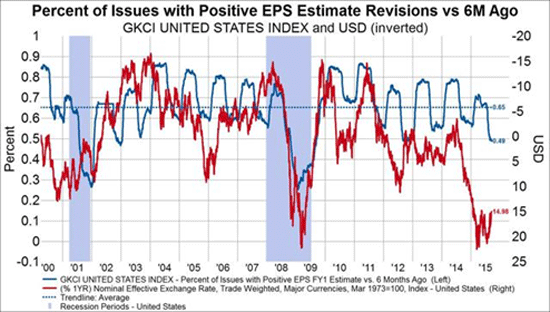Connecting the Dots: Wall Street Carnival Barkers, Cheerleaders, and Fools
- Shannon Staton
- |
- September 29, 2015
- |
- Comments
“I’ve got a message for your friend Jim Cramer. The Fed cannot permanently raise stock prices. And to have him cheerleading for lower rates 24 hours a day is, I think, unsavory.”
—James Bullard, St. Louis Federal Reserve President
Watch these two video clips:
Clip #1 is a 41-second video clip of James Bullard, president of the St. Louis Federal Reserve, on CNBC where he gives Jim Cramer a good spanking for being too much of a stock market cheerleader.
Clip #2 is live CNBC coverage of the FOMC’s announcement to leave interest rates unchanged. In particular, listen to the cheering in the trading pit in the background.
When I first got into this business, the guys in the trading pits didn’t care which way the stock market moved, because they were professional traders and nimble enough to make money no matter what direction the stock market moved.
Today, those traders have become cheerleaders who think the Federal Reserve exists to help them make money, which is why Bullard’s criticism is so accurate. Despite Wall Street’s caterwauling, it is not the Fed’s job to prop up stock prices.
Those trend-following knuckleheads on Wall Street don’t realize it (yet), but the stock market will fall without the Fed’s help because corporate America is starting to really struggle.
Falling Sales: The analytical crowd on Wall Street is more wrong than right when it comes to revising the direction: increasing sales or shrinking sales.
Over the last six months, only 37% of publicly traded companies increased their revenue forecasts. 37% may sound like a lot, but it is the smallest number of companies since 2009 and almost as bad as the depths of the dot-com bust in 2001.
Median sales growth estimates for the next 12 months are currently just 4% compared to the historical growth rate of 7%.
Falling Profits: We see the same shrinking trend in positive earnings estimate revisions, which have dropped to historically low levels.
Over the past six months, only 49% of stocks have seen their EPS estimates revised upward. That’s the lowest level since September 2012 and way below the 15-year historical average of 65%.
What does this mean for us?
- It means the Wall Street crowd—like the cheering pit traders and Jim Cramer—understand that the stock market is going to fall like a rock without more monetary steroids.
- Wall Street continues to tell you and me to keep buying stocks while behind the scenes, they are becoming more bearish by the week.
Which brings me to my last point:
Myth: Recessions cause bear markets.
Reality: Recessions precede bear markets.
If you’re waiting for somebody to clang a recession warning bell before you start to become a defensive investor… you’ll be too late.
Example #1: The NASDAQ peaked on March 10, 2000, at 5,132 and went on to lose 78% of its value. However, US GDP didn’t turn negative until the first quarter of 2001.
Example #2: The S&P 500 peaked in October 2007, but we didn’t get two consecutive quarters of negative GDP until the third and fourth quarter of 2008.
Here are the tell-tale signs of a bear market.
Failed rallies: The first stage of a bear market includes rallies that cannot hold. The stock market starts to stair-step lower; the exact opposite of a bull market.
Low-volume rallies: When the stock market does rally, trading volume is modest as fewer and fewer investors “buy the dip.”
Downside acceleration: Conversely, trading volume dramatically increases during declines.
Triple-digit drops: Forget about death by a thousand cuts; as the bear market matures, triple-digit Dow Jones drops become common.
Bulls go into hibernation: When the media start to regularly comment about the bear market… it’s too darn late.
The Dow Jones Industrial Average peaked at 18,321 on May 19, 2015, and this column has been urging you to protect your portfolio ever since. I don’t say that to pat myself on the back but to emphasize that we’ve only seen the tip of the bear market iceberg.

Tony Sagami
30-year market expert Tony Sagami leads the Yield Shark and Rational Bear advisories at Mauldin Economics. To learn more about Yield Shark and how it helps you maximize dividend income, click here. To learn more about Rational Bear and how you can use it to benefit from falling stocks and sectors, click here.

